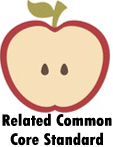What is a Mythology?
In the world of literature, a myth is a conventional story. Mythologies are different because they express culture's worldview in a different way. Every culture on the planet has ancient stories that have been passed along through storytellers. This began even before written language was developed, and since these stories have become legendary, they've stuck around.
Even though there are cultural differences, all myths have some commonalities that make them unique. At one point in time, people believed that myths were true, which served as guiding beacons for human behavior. Mythologies are usually set in ancient settings. These are often wild places that have characters with superhuman abilities. But how do you write one?
Go Through Examples
You can start by reading examples of mythologies from several cultures. This will help you gain knowledge of the different elements included in mythologies. Pantheons in Greek, Roman, Egyptian, and Chinese mythologies are often the main source of inspiration for myth writers. As you read through them, take notes of the mystical aspects.
A traditional ancient myth will have goddesses and gods and some supernatural creatures. These different plots attempt to explain how the earth was created and how life continues to thrive. You may also notice other elements of the natural world and a belief about human life.
Study the Connections
A myth's primary goal is to explain the different aspects of human behavior or the natural world. Once you've decided on the cultural part you want to capture in your myth; you'll have to research it further. This is essential to weave some facts into the mix, which will make your tale a lot more believable. Remember, believability usually translates to fascination. When a myth isn't likely, people quickly move past the story.
For instance, if you're writing a myth about Japanese culture, you should research beliefs connected to Buddhism or Shinto. It would help if you also read stories about the geography of Japan so that the setting you choose synchronizes with the myth as well.
Create the Characters and the Plot
The next step is to create the plot and the characters. You'll now have to decide which conflict your characters will come across from the real world and how they will solve it. You'll have to create a supernatural explanation or the solution to your conflict through the different characters in your story.
For instance, one of your characters may have the ability to move objects without touching them, while another may have wings. They also need to have corresponding personalities that align with their abilities.
Write It
Once you've planned out the myth's entire plot, you should spend some time organizing the story. Having a solid opening scene will help since it will keep your readers hooked. You should also introduce your characters and their abilities as well as you can so your readers aren't confused.
As you reach the ending, you'll have to close the myth by referring to an element that belongs to the natural world. Once you've written it, give it to someone with a critical eye that can help you improve on it. Once you've made the final edits, write the final draft.
